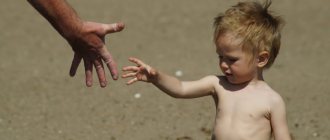When we talk about the presence of certain psychological abnormalities in a person, we mean that there is some opposite state that is the norm. But it’s quite difficult to clearly define what it is.
After all, there is no specific concept of psychological abnormalities or psychological health of a person. There is nothing unusual or strange about this. Such a concept directly depends on a large number of factors, which, as a rule, are subjective.
Social stereotypes
Certain psychological deviations of the individual become obvious if we consider the behavior of a person from the side of society. After all, there are certain social stereotypes in it. They determine the line that exists between abnormal and normal behavior of an individual.
However, here too you can find many nuances. As in each specific segment of society, the norm of behavior can have significant deviations. For example, it is completely natural for those who live in the Russian outback to know not only by sight, but also by name all their housemates. The situation is completely different in large cities. Here it is not necessary and even simply not customary to say hello to your neighbor in the entrance.
Thus, a social stereotype is the most common view of a particular group of people. They decide what should be the behavior of a member of a specified group or someone who is not a member of it. Often such views extend both to the external manifestations of a person’s behavior and to his psychological state in a given situation.
Social norms
This concept, first of all, defines the rules of behavior that have developed historically and are followed by society. These are generally accepted standards of human behavior in a group of people, and compliance with these standards is the main condition for the interaction of members of society with each other. Social norms and social deviance are two concepts that are the opposite of each other.
Many firmly believe that norms are the unwritten rules of society, but this area is regulated by legislative acts, job descriptions, and other organizational documents. Conventionally, they can be divided into the following important categories:
- Legal norms.
- Moral standards.
- Ethical standards.
- Religious norms.
A person cannot follow only one of the above areas; they all interact with each other, because each member of society performs several social roles at once. He is a citizen, an employee and a member of a team, a mother or father, a son or daughter, a friend, and so on. Each of these roles requires certain experience and accepted norms of behavior, so a person adopts this experience, which he uses in the future for self-realization.
The simplest definition of social deviance is human behavior that does not correspond to the values and norms accepted in society.
Personal factor
Each person also has his own attitude towards the reaction that he shows to specific life events. This factor is a personal stereotype, expressed in an individual’s idea of how he should behave in a certain situation and how he should feel about it.
For example, if a person, seeing the suffering of another, begins to experience pleasure, and at the same time he does not have a desire to help, then this may be perceived by the individual himself as a deviation from the norm. In this case, disappointment may arise. A person believes that he is bad and should be different. This situation can be explained by stereotypes that prescribe not only correct behavior, but also feelings. Thus, if the question relates to a certain person, then the basis for understanding psychological deviations from the norm and the norm itself lies in the expectation of a certain type of behavior. Everything that corresponds to such expectations is regarded by the individual as the norm, and everything that does not is regarded as a deviation from it.
If we consider this issue from the point of view of society, then everything here follows a similar pattern. The only difference is that the judge in this case is society, not an individual.
Types of mental disorders
Mental disorders can occur in people regardless of ethnicity , age or gender . The mechanisms of the occurrence of mental illnesses have not been fully studied, therefore medicine cannot give specific definitions. However, today the connection between certain age limits and mental illnesses has been clearly established. Every age has its own most common disorders.
In elderly people
In old age, against the background of diseases such as bronchial asthma, renal or heart failure and diabetes mellitus, many mental abnormalities appear. Senile psychological diseases include:
- dementia;
- paranoia;
- Pick's syndrome;
- marasmus;
- Alzheimer's syndrome.
Types of mental disorders in adolescents
Often, mental illness in adolescence is associated with adverse factors in the past. The following mental disorders are usually observed:
- bulimia nervosa;
- prolonged depression;
- drankorexia;
- anorexia nervosa.
Mental illnesses cannot be treated on their own, therefore, if there is any suspicion of mental disorders, it is necessary to urgently seek help from a psychotherapist . A conversation between the patient and the doctor can help quickly determine the diagnosis and choose the right treatment regimen. Almost all mental illnesses are curable if treated promptly.
Criterion for determining psychological norm
When considering the above, it becomes clear that personality deviations are identified both from the point of view of society and from the position of the person himself. However, in both cases, the most important sign of non-compliance with the norm is the disappointment that arises due to failure to meet expectations. It is the discomfort that results from the conflict between reality and social expectations that is considered the factor that distinguishes the norm from what psychologists call a personality disorder.
Origins of the problem
In psychology, personality disorder is considered in two aspects. One of them is the social interaction of the individual with society. What is meant by this concept? These are those features of a particular person’s behavior that lead to social problems or psychological discomfort. The second aspect is the deviation from the norm of the individual himself. Such features of human behavior also lead to problems and psychological discomfort. However, in this case, it is the individual himself who suffers the most.
Of course, the concepts of “discomfort” and “problem” in this case have quite wide boundaries. Thus, an individual may experience a state of either mild anxiety or severe depression. From the point of view of society, everything looks completely different. For him, the problem is considered in the form of a real threat in the case of openly criminal behavior of the individual or in the form of those small problems that are presented in the form of inappropriate behavior. In both cases, a person’s psychological deviations are certainly expressed in his personal characteristics.
"Crawling Goosebumps"
The first time you feel like something is crawling under your skin, you can get very scared.
And this fear is quite understandable - there is even a separate form of psychosis in which a person believes that he is infected with parasites. This condition - dermatozoal delirium - can be either a separate mental disorder or a symptom of schizophrenia. However, creepy crawlies do not always indicate mental problems. It's more likely that the cause is the fairly harmless restless leg syndrome. Among its symptoms are goosebumps, tingling, bloating and discomfort in the limbs, which greatly torment a person at rest (mainly at night). This disease occurs in 5–15% of adults, most often in older women. Pregnancy also provokes restless legs syndrome - at least 20% of women suffer from it. This syndrome can also accompany chronic diseases: type 2 diabetes mellitus, fibromyalgia, rheumatoid arthritis, multiple sclerosis and others. In healthy young people, restless legs syndrome can be caused by poor sleep or excessive alcohol consumption.
If goosebumps under your skin are driving you crazy at night, don’t rush to see a psychiatrist. It is quite possible that lifestyle changes will help cope with the syndrome: regular physical activity, massage and foot baths, correcting sleep patterns, limiting alcohol and caffeine.
Causes of disorders
As a rule, psychological deviations of a person manifest themselves in their cognitive or mental activity. They are also visible in the sphere of perception of the surrounding world and in the emotional reaction to relationships with others.
Psychological personality deviations may be congenital. In this case, their manifestation occurs in a person throughout his life. Certain socio-psychological deviations are formed during certain periods of an individual’s maturation. This could be, for example, early or teenage years. Deviations in a person’s psychological characteristics are caused by a variety of reasons. They are considered ranging from brain pathologies to those caused by severe stressful experiences, such as, for example, psychological or physical violence.
According to statistics, in its mild form, personality disorders are detected in approximately 10% of adults. It is worth keeping in mind that such a problem requires the attention of a specialist.
Risk factors for personality pathologies
Psychological disorders bring with them many problems. One of the most common of them is psychological discomfort. In turn, it can be expressed in various degrees and cause negative consequences. Moreover, the problems that arise can be both internal and behavioral. Among them we can note an increased tendency to suicide, as well as to the formation of alcohol and drug addiction, antisocial, and sometimes even criminal behavior. Often psychological problems become the cause of severe depression, and sometimes they provoke specific mental pathologies, such as schizophrenia or obsessive-compulsive disorder. And, of course, such people create a lot of problems both for themselves and for those around them.
Signs
Like any phenomena occurring in the world, social ones have their own factors:
- Historical determinism.
- Negative consequences for the public.
- Massive and sustainable.
The fight against social deviations of society occurs through legal, economic, and moral sanctions.
Some signs of misconduct are transitory, these may include marriage of convenience, speculation, and so on.
Significant dynamics of loyalty to social deviations are noticeable, and society’s attitude towards the behavior of its members is increasingly liberal. Significant achievements of society include the abolition of the death penalty.
Signs of personality deviations
What are the symptoms of a person’s non-compliance with the psychological norm? First of all, this refers to the behavior of an individual, which is inadequate if we consider it from the point of view of the problem that has arisen. The main reason for this symptom lies in the fact that the person does not seek to resolve the issue that concerns him. Sometimes it only partially eliminates the problem, and sometimes it makes it worse. This feature causes difficulties in an individual’s communication not only in society, but also in the family. Often such a person is not even aware of his reactions to the situation or behavior in it. In this regard, he never seeks to visit a psychologist, although he is dissatisfied with his life, and he often has problems in various social situations.
Not everything is in order with such people in terms of their inner world. This is expressed in symptoms such as mood swings, increased anxiety and restlessness, and depression.
Among the main signs of a personality disorder are:
- the constant presence of negative feelings such as anxiety and threat, awareness of one’s own uselessness and worthlessness, as well as easily arising anger;
- negative emotions and control problems;
- constant emotional devastation and avoidance of contacts with people;
- difficulties in communicating with loved ones, especially with a spouse, as well as with children;
- constantly arising problems with the environment due to the inability to control negative feelings and aggressive behavior;
- partial, and sometimes complete loss of contact with the surrounding reality.
All of the above symptoms tend to worsen. Most often this happens against the background of stressful situations.
Causes of mental disorders
The etiology aspect of these diseases has not been fully studied, therefore modern medicine cannot accurately determine the mechanisms that cause mental disorders. However, it is possible to identify some reasons whose connection with mental disorders has been scientifically proven:
- brain diseases;
- stressful conditions in life;
- medical problems;
- genetic disposition;
- hereditary causes;
- difficult circumstances in the family.
In addition, doctors note a number of special cases, which represent specific deviations, incidents or conditions against which serious mental disorders appear. The reasons that will be discussed often occur in everyday life, and therefore lead to a deterioration in a person’s mental health in the most unexpected situations.
Alcohol addiction
Systematic abuse of alcoholic beverages often leads to mental disorders in humans. The body of a person suffering from chronic alcoholism constantly contains a large amount of breakdown products of ethyl alcohol, which cause serious changes in thinking, behavior and mood. In this regard, dangerous mental disorders arise, including:
- Delirium tremens . A common post-alcohol mental disorder that appears due to deep disturbances in metabolic processes in all systems and organs of the human body. Delirium tremens is expressed in convulsive seizures and sleep disorders. Most often, these phenomena appear 60-80 hours after finishing drinking alcohol. A person experiences sudden changes in mood, constantly changing from joy to anxiety.
- Psychosis . Mental illness, which is explained by a violation of metabolic processes in the brain. The toxic effects of ethyl alcohol overshadow a person’s consciousness, but the consequences appear only a few days after the end of alcohol consumption. A person is seized by a mania of persecution or a feeling of fear. In addition, he may have various obsessions that are associated with the fact that someone wants to cause him moral or physical harm.
- Hallucinations are pronounced ideas, brought pathologically to the level of perception of real objects. It seems to a person that objects and people around him are falling, spinning or swaying. The perception of the passage of time is distorted.
- Brad . Mental illness, which is called delusion, in a person is expressed in the manifestation of unshakable conclusions and judgments that do not correspond to reality. In this condition, the patient develops photophobia and sleep disturbances. The line between dream and reality becomes blurred, a person confuses one with the other.
Brain injury
Brain injuries can result in a whole range of significant mental illnesses. As a result of brain damage, complex processes are launched that lead to clouding of consciousness. After these cases, the following psychological diseases often occur:
- Oneiroid . A rare type of psychological illness due to injuries to the nerve centers of the brain. Characterized by immobility and constant drowsiness. For a certain time, a person can become chaotically excited, and then again freeze without moving.
- Delirium . A severe psychological disorder in which a person experiences visual hallucinations. For example, a person who has been injured in a car accident may see groups of people, moving vehicles, and other objects associated with the accident. Mental disorders plunge a person into a state of anxiety or fear.
- Twilight states . Most often appear in the evening. Delirium appears, the person becomes drowsy. Sometimes the patient plunges into a state of stupor. A person’s consciousness is filled with various pictures of excitement, causing corresponding reactions: from brutal affect to psychomotor disorder.
Somatic diseases
Against the background of somatic disorders, the human psyche suffers very seriously. Disorders develop that are almost impossible to get rid of. Here is a list of mental illnesses that medicine considers the most common in somatic disorders:
- Dementia . A terrible disease that stands for acquired dementia. This psychological disorder often occurs in people aged 55-80 years who have somatic diseases. The diagnosis of dementia is made to patients with reduced cognitive functions. Somatic diseases lead to irreversible processes in the brain. Moreover, mental sanity does not suffer.
- Korsakov's syndrome . A disease that is a combination of memory impairment regarding current events, the appearance of false memories and loss of orientation in space. A serious mental illness that cannot be treated by known medical methods. A person always forgets about events that just happened and often asks the same questions.
- Asthenic neurosis-like disease . Mental deviation when a person becomes talkative and hyperactive. A person often falls into short-term depression and constantly experiences phobic disorders. Most often, fears do not change and have clear outlines.
Epilepsy
Almost every person who suffers from epilepsy experiences mental disorders. Disorders that appear against the background of this disease can be constant (permanent) or isolated (paroxysmal). The cases of mental illness described below are most often encountered in medical practice:
- Epileptic mood disorders . Most often, these mental disorders are expressed in the form of dysphoria, characterized by a simultaneous combination of causeless fear, melancholy, anger and many other sensations.
- Transient (moving) mental illness . Long-term deviations of a person’s condition from normal. A transient mental disorder is a prolonged mental attack, which is aggravated by a state of delirium. The attack can last from 2-3 hours to the whole day.
- Mental attacks . Medicine defines several types of this disorder. All of them are characterized by sudden changes in human behavior and mood. A mental attack in a patient who suffers from epilepsy is accompanied by loud screams and aggressive movements.
Malignant neoplasms
The appearance of malignant tumors often leads to changes in a person’s mental state. With the increase in tumors on the brain, pressure increases, which causes significant deviations. In this state, a person experiences melancholy, delusions, unreasonable fears and many other symptoms. All this indicates the presence of such psychological diseases:
- Memory impairment . With the manifestation of this deviation, symptoms of Korsakov's syndrome appear. A person gets confused about the events that just happened, loses the logic of events, asks the same questions, etc. In addition, in this state the patient’s mood often changes. Within a few seconds, a person’s emotions can switch from dysphoric to euphoric, and vice versa.
- Affective disorders . As a rule, these mental disorders occur with tumors that develop in the right hemisphere. Because of this, attacks of melancholy, fear and horror appear. Emotions that are caused by pathology of the brain structure are displayed on a person’s face: the pupils dilate and contract, skin color and facial expression change.
- Hallucinations . They are olfactory, tactile, gustatory and auditory. These deviations most often appear in the presence of tumors in the temporal areas of the brain. Often, vegetative-visceral disorders develop simultaneously with them.
Vascular disorders of the brain
Pathologies of the blood vessels and circulatory system immediately affect the state of the human psyche. With the development of diseases that are associated with a decrease or increase in blood pressure, brain function deviates from the norm. Severe chronic disorders lead to the appearance of very dangerous mental disorders, including:
- Cerebrovascular psychoses . The etiology of these mental disorders is not fully understood. Moreover, medicine confidently names two types of cerebrovascular psychosis: prolonged and acute. The acute stage is expressed by delirium, twilight confusion, and episodes of confusion. The protracted stage of psychosis is characterized by a state of stupefaction.
- Vascular dementias . This diagnosis means dementia. In terms of their symptoms, vascular dementia is similar to the consequence of some somatic diseases that appear in old age. Thought and creative processes in this state almost completely fade away. The patient loses the desire to maintain contact with someone and withdraws into himself.
Types of psychological disorders
According to the international classifier, all personality deviations are divided into 3 main groups. Among them:
- Group A. It includes eccentric pathologies. These are disorders such as schizoid, schizotypal, and paranoid.
- Group B. Such deviations include theatrical and emotional sensations. These include disorders such as narcissistic and histrionic, antisocial and borderline.
- Group C. It includes panic and anxiety disorders in the form of avoidant and obsessive-impulsive dependent disorders.
The pathologies described above can be detected in one person. But, as a rule, there is always one disorder that is most pronounced. It is by this that the type of pathological personality deviation is determined.
Psychological disorders in a child
Parents should always remember that they are responsible not only for the physical health of their child. The psychological component also plays an important role in the development of the baby. She will have a huge influence on the formation of his worldview. In addition, psychological health will be the basis of the behavior and actions of a little person. It will largely depend on him whether the child, having matured, will benefit society or, on the contrary, will become a socially dangerous person for him.
Today, science knows for certain that the consciousness of a baby, like a sponge, absorbs every word and all the actions of people close to him. This happens up to 5 years of age. The child’s picture of the world around him is formed on the basis of his usual communication styles, role models, the financial state of the family and the problems of his parents, violence, betrayal and betrayal. All negative aspects in the future can come back to haunt an already grown person in the future.
For example, if up to the age of one year the mother often ignored her child, did not respond to his tears and fed her whenever she wanted, then the baby begins to reject the sensory sphere. In his mind, the uselessness of emotions is recorded, which he subsequently throws away as unnecessary.
In the same way, deformation of the child’s psyche occurs. If at the age of 4-5 he is subjected to physical or sexual violence, then his still unformed consciousness begins to perceive what is happening as the norm. Moreover, he learns to imitate it. This is how psychopaths arise. But, by and large, they are simply returning to the world what it gave them.
Types of deviations
Deviations from the norm can be divided into four groups: physical, mental, pedagogical and social.
Let's take a closer look at them.
Physical deviations from the norm are primarily related to human health and are determined by medical indicators. In medicine, for each age and gender group of children, their own indicators are determined (weight, height, breast volume, etc.), which characterize the child’s health. In fact, these are ideal indicators, and it is unlikely to find a child who exactly matches them.
At the beginning of the 90s in Russia, according to statistical data, every fifth child is born unhealthy, including 5-8% with hereditary pathology and 1-2% with congenital developmental anomalies. Currently, people with disabilities make up over 10% of the total number of students in educational institutions of the education system. Up to 8% of the population needs special education means, but in fact only a quarter of children in need have the opportunity to use them. This means that the process of socialization of such children is particularly difficult and requires special work.
Deviations in health can be caused either by hereditary factors or by any external circumstances: difficult environmental conditions, unsatisfactory quality of drinking water, a decrease in the general standard of living of the family, etc.
There are quite a few classifications of people with disabilities in health and development. Thus, the World Health Organization in 1980 adopted the British version of the three-tier disability system:
· illness
- any loss or anomaly of mental or physiological functions, elements of the anatomical structure, complicating any activity;
· limited opportunity
- any limitation or loss of ability (due to the presence of a defect) to perform any activity within the limits of what is considered normal for a person;
· incapacity (disability)
- any consequence of a defect or limited ability of a particular person that prevents or limits the performance of any normative role, based on age, gender or social factors.
In the draft law of the Russian Federation on special education, physical disabilities are defined based on the child’s learning capabilities. The law introduced the concept, accepted in Western countries, of “persons with disabilities.”
These include children with physical and (or) mental disabilities that prevent them from mastering educational standards without creating special conditions for receiving education. The concept of “disadvantage” was also introduced, and types of deficiencies were identified - physical, mental, complex and severe.
To physical disabilities
include duly confirmed temporary or permanent deficiencies in the development and (or) functioning of a human organ(s), or a chronic somatic or infectious disease.
Mental handicap
is a duly approved temporary or permanent deficiency in a person’s mental development, including speech disorders, emotional-volitional disorders, including brain damage, as well as mental development disorders, mental retardation, creating learning difficulties.
Complex flaw
combines physical and (or) mental disabilities, confirmed in the prescribed manner.
Severe disadvantage
- a physical or mental disability confirmed in the established manner, expressed to such an extent that education in accordance with state educational standards is inaccessible.
Deviations in the physical development of a child may include: illness, visual impairment, hearing impairment, and musculoskeletal disorders.
Mental deviations from the norm are primarily associated with the mental development of the child and his mental deficiencies.
This group of deviations primarily includes mental retardation
(ZPR) of the child and
mental retardation
of children, or oligophrenia (from the Greek oligos - small and phren - mind). Mental retardation may be due to birth defects of the nervous system or the result of illness, injury, or other causes. Children may exhibit varying degrees of mental retardation: from mild - debility to severe - idiocy.
Mental disorders also include speech disorders
varying degrees of complexity: from impaired pronunciation and stuttering to complex defects with reading and writing impairments.
Another type of mental disorder is a violation of the emotional-volitional sphere
child. Extreme forms of this type of deviation are autism (Greek aytos - oneself) - a mental state characterized by isolation, lack of need for communication, and suicide - attempts to commit suicide.
Giftedness represents a special group of deviations
children. This is a unique combination of abilities that ensures the success of any activity. Abilities are a personality characteristic that expresses the degree of mastery of a certain set of activities. The measure of giftedness and talent is established not by the characteristics of the abilities themselves, but by the nature of the products of activity, distinguished by novelty, originality, and other indicators. It is well known that a child exhibits different abilities: some show abilities in music, others in mathematics, others in learning foreign languages, etc. Only under favorable external conditions do they acquire the form of giftedness. A great expert in child psychology, writer Korney Chukovsky, in his famous book “From Two to Five,” wrote: “...Starting from the age of two, every child becomes for a short time a brilliant linguist. Truly, a child is the greatest mental worker who, fortunately, does not even suspect it.” Psychologist N. Leites, who studied abilities and giftedness in childhood, cites in his works numerous examples of the manifestation of the talent of great people in the early years. For example, the founder of cybernetics N. Wiener entered university at the age of 12, and at 14 he had his first academic degree; A. S. Griboyedov entered Moscow University at the age of 11, and at the age of 15 he graduated from two departments (literature and law) of the Faculty of Philosophy. And there are many such examples.
Currently, unique methods have been developed to detect children’s early abilities in music, fine arts, some sports, children’s intellectual abilities, as well as methods for their formation. However, the problem does not end there: many questions arise: how to discover the abilities of children in regular and special schools, how to help a child realize these abilities, what ways and means exist for developing children’s giftedness?
The causes of physical and mental disorders in children have been thoroughly studied in science. It should be noted that restrictions at the level of human biological organization are not so common - only in 8-10% of children; the number of children affected by unfavorable development conditions ranges from 20 to 50%.
To diagnose physical and mental disabilities, a permanent interdepartmental psychological, medical and pedagogical commission
(at the rate of one commission per 10 thousand children, but not less than one in the territory of each subject of the Russian Federation).
The commission's tasks are very broad. This includes conducting the earliest possible psychological, medical and pedagogical examination of children, and identifying the characteristics of their development in order to establish a diagnosis and satisfy the child’s rights to receive an education. The commission’s task also includes advising parents (or their legal representatives), teachers, medical workers, social workers and other specialists on issues related to special conditions for children’s education. The information that the commission receives is entered into a data bank about children with disabilities.
The psychological, medical and pedagogical commission includes specialists from various fields: psychologist, psychiatrist, neurologist, orthopedist, ophthalmologist, therapist (pediatrician), physiotherapist. In addition, the commission must include representatives of special education - a speech therapist, an oligophrenopedagogist (a specialist who works with children with mental disabilities), a teacher of the deaf (a specialist who works with deaf children), a typhlopedagogist (a specialist who works with blind children); as well as a social educator and lawyer.
Establishing a physical or mental disorder in a child entails the creation of certain conditions, including special educational institutions: for children with speech, hearing, vision, mental, and musculoskeletal disorders, with complex disabilities, including deaf-blindness, for children susceptible to chronic somatic or infectious diseases. Such specialized institutions make it possible to carry out comprehensive work both on the health of children and on their upbringing and education.
However, the isolation of a child in a special educational institution, separation from other children who are different from him, creates certain difficulties in his socialization and integration into society. Therefore, such children, as a rule, need social and pedagogical assistance. At the same time, the functions of a social teacher in working with these categories of children have not yet been defined. But of course, social and pedagogical activities for the socialization of children with disabilities in physical or mental development will in the future receive official status and will be of great importance.
Pedagogical deviations - such a concept is still rarely used in pedagogy and social pedagogy. Meanwhile, in pedagogical activities, to realize pedagogical goals and stimulate personal development, various norms are used, with the help of which the activities of students are regulated by comparing the norms with indicators characterizing the processes and results of this activity, and evaluations of its success are formed. First of all, this concerns the standards that determine the level of education; then the prospects that the student strives to achieve; these may be norms of the child’s individual development, providing new, better results in learning, and others.
With the greatest accuracy and certainty we can talk about the norms of receiving or not receiving (which is a deviation) education. In recent years, children have appeared in Russia who, due to certain circumstances, did not receive an education. Such deviations from the norm can be called pedagogical.
The pedagogical norm, or educational norm, is the standards of general education that are adopted in the country. In accordance with these standards, a child at a certain age must receive an appropriate level of education, complete primary, junior secondary (9 grades) or complete secondary (11 grades) school. According to the Law on Education of the Russian Federation, general secondary education is compulsory.
However, there are children who have not received general education. TO
This category of children includes those who do not attend school; only completed primary school; did not receive general secondary education. There are quite a few reasons for this situation of children in our country: absenteeism from school and poor academic performance of children leads to reluctance to study; Trouble in the family pushes the child onto the street, where instead of attending classes he begins to earn his living; environmental and social cataclysms, when children lose their parents, find themselves crippled, falling out of the education system for some time. The number of children prone to vagrancy and who also do not attend school is increasing. There are many more reasons why children do not go to school.
It should also be noted that there are great difficulties in obtaining an education for children with mental or physical developmental disabilities. For such children, as shown above, there are schools where they study under the guidance of professionally trained specialists. But a lot depends on where the child lives: in a city or rural area, what kind of family he is from - either it is a family interested in getting their child’s education, or a family, for example, alcoholics, homeless people, where the child’s education is far from the first place in life. If we add to this the families of refugee migrants who have such children, in this case the problem of obtaining an education for children is even more aggravated.
For some children with health problems, education is carried out individually at home. However, as a rule, only basic disciplines are taught, and such subjects as music and fine arts, which are included in the standard of general education, are usually not studied by children at home. At the same time, they are of great importance for the development of children’s abilities. Separation of a child from the school community also negatively affects the formation and development of the child, and his self-affirmation.
The main personal difficulty of such children associated with their integration into society lies in their further professional self-determination and obtaining vocational education. Professional self-determination is the leading activity for a teenager who has completed 9 grades and high school students. However, obtaining the desired education that meets the interests and abilities of children is complicated by various objective and subjective circumstances: the number of educational institutions of primary vocational education is decreasing, secondary and higher vocational education can be obtained on a competitive basis, paid education is increasing, teenagers are often characterized by an inadequate assessment of their capabilities and etc.
Of particular importance in this regard is the vocational education of disabled children and children in prison. One should not discount the inadequate attitude of some children to reduce the prestige of education (“money can be earned in other ways”).
One should also keep in mind a fairly large category of children who are not able to independently choose the type of professional activity due to impaired social development at previous stages. Such children are united by their reluctance or inability to realize themselves in a socially significant professional field of activity. In this case, children appear who have not received vocational education,
who need social and pedagogical assistance from a specialist to overcome this deviation.
Social deviations are associated with the concept of “social norm”. A social norm is a rule, a pattern of action or a measure of acceptable (permissible or obligatory) behavior or activity of people or social groups, which is officially established or developed at a particular stage of development of society. In fact, social norms act as a model of proper behavior, proper social relations and activities that are created by people on the basis of knowledge of social reality.
The tendency to deviate from generally accepted rules of behavior has its own historical path of development. It has been known since ancient times. But society, motivated by the desire for self-preservation, tried to regulate relationships between people and introduced various social restrictions: myths, taboos (prohibition), traditions, religious dogmas. As human society became more complex and social relations improved, more stable legal and moral positions of people began to form in relation to behavior that deviates from the norms of morality and law accepted in a particular society. Social deviations can be caused by a person’s social status, his role as a subject of activity, the nature of the activity performed, value criteria and other factors.
Social norms are divided into two large groups: universal, i.e., applying to every person in society, and private, relating to and regulating a certain area of professional activity or life of people (for example, a doctor, a social teacher, a brother, a friend, etc.). Social norms are elements of a system of normative regulation and ensuring sustainable social life (morality, law, tradition). Social norms can be grouped according to other criteria; they can be divided into legal, moral, political, religious, etc. Compliance with social norms is ensured by turning external requirements into a person’s need and habit through his socialization or the application of various sanctions (legal, social, etc. ) to those whose behavior deviates from accepted social norms.
Social norms and deviations from them in human behavior are integral factors in the functioning of any society.
The peculiarity of social norms for children is that they act as a factor in upbringing, during which the assimilation of social norms and values occurs, entry into the social environment, assimilation of social roles and social experience. In this case, one of the important functions of education is its control function, the task of which is to manage and organize circumstances that influence the consciousness and behavior of children and at the same time ensure the desired educational effect.
In the sociological, psychological and pedagogical literature, the problems of children with deviant behavior, varieties of which are children's alcoholism, substance abuse, drug addiction, prostitution, homelessness, neglect, vagrancy, delinquency and crime, have been thoroughly studied. In the scientific pedagogical literature, various terms are used for this category of children: “difficult”, “difficult to educate”, “child with deviant, antisocial behavior”, etc. Despite some subtleties in the definition of these concepts, many researchers agree on one thing - that in this case the child’s behavior does not correspond to the norms and rules accepted in this society.
The reasons for such deviant behavior are also quite well studied. They are associated with the difficulties of adolescence, the uncertainty of the social situation in society, the instability of the country’s development, the occurrence of extreme situations from which the child cannot independently find a way out, etc.
To provide assistance to such children, specialized social services are being created. Children who have committed socially dangerous acts and have reached the age of eleven years, by a court decision, taking into account the conclusion of the psychological, medical and pedagogical commission, may be sent to special schools or special vocational educational institutions.
Among children with deviations in social development, one should also distinguish such a category as children left without parental care. These are orphans and so-called “social orphans” - children who have biological parents, but due to various circumstances do not live with them. There are special educational and social institutions for orphans and children left without parental care. These include: orphanages, orphanages, boarding schools, social rehabilitation centers for children, social shelters, etc.
Summarizing the characteristics of various types of deviations from the norm, we present them in a summary table
Manifestations of personality disorders at an early age
There are seven dangerous signs of psychological abnormalities in a child. Some of them were highlighted by J. MacDonald, a famous psychiatrist who devoted his life to studying the behavior of criminals. This researcher even came up with a certain formula that adults simply ignore in most cases. But if the parents have identified at least three of the dangerous signs of psychological abnormalities listed below in the child, then the child should be taken for a consultation with a psychiatrist. Otherwise, you will most likely have to reap negative benefits in the future.
Psychological abnormalities in children can manifest themselves:
- Zoosadism. This is the first and most striking sign of a deviation in the child’s psychological development. It is expressed in the fact that a small man tortures and kills animals. This does not include cutting the cat’s hair, tinting its fur, or tugging its tail, because this is how most children learn about the world. Zoosadism is a rather serious phenomenon. It represents the venting of the internal aggression existing in the child, and in a cruel form. Such psychological abnormalities often appear in adolescents.
- Lack of understanding of complex emotions. Psychological deviations in the development of a child are difficulties that prevent him from understanding such higher emotions as pity, sympathy, empathy and love. These children are emotionally unstable. Most often, they simply play the role in which others want to see them. However, they do not experience anything. Such children are cold to people's suffering and are unable to describe their own emotions. Feelings without comprehension allow you to turn a child into a good manipulator.
- Constant lies. There are children who lie out of fear of their parents' anger, their father's belt, or any other punishment. In this case, lying is a natural defensive reaction of the psyche. But if a child tells fairy tales without any specific purpose, then this is a rather dangerous symptom. Sometimes such children, caught in a lie, even fall into hysterics, even more frightening those around them.
- Enuresis. Of course, not every preschooler who suffers from this disease will become a criminal element in the future. However, J. Macdonald derived a certain pattern. According to it, more than 76% of criminals suffered from enuresis in the early years of their lives, as a result of which they experienced constant humiliation from their peers and endured their ridicule, as well as bullying and beatings from their parents. Thus, the aggression of society forced these people to throw out their feelings of internal inferiority on innocent victims.
- Deviant behavior. Of course, many children skip classes and do not fulfill their promises. This does not at all indicate a psychological deviation in the child’s development. You should look at this problem completely differently if this happens quite often and is accompanied by deliberately defiant aggression, selfishness and disobedience on the part of a schoolchild or teenager. Such children often run away from home, wander, try drugs, and steal other people's things. But the worst thing is that all this gives them pleasure. They do not at all seek to attract the attention of others. They like this lifestyle. And this is a serious cause for concern.
- Pyromania. Another sign of a psychological deviation in a child may be his desire to constantly set fires, subsequently observing fires. He feels real pleasure from this. Such a child is not able to resist impulses and realize the consequences of the crimes that he has committed. Playing with fire allows children to release their inner rage and also to compensate for their social and physical humiliation through the pain of others.
- Bullying the weak. Psychological studies of children with developmental disabilities have made it possible to state that at an early age they are subject to emotional pressure from their peers and do not disdain physical violence, humiliation and persecution. Thus, the child copies the behavior of his elders. It is important for parents not to confuse such signs with domestic hooliganism. In this case, the child becomes a bully in order to attract the attention of adults or imitate the behavior of a bad hero.
Do social deviations appear from birth?
Psychologists and sociologists have established that human behavior becomes deviant only gradually and goes through certain stages of development:
- It all starts with contradictions between established social norms and personal values.
- These contradictions develop into disagreement and denial of these established norms and rules, which leads to social deviations in the development of children.
- Denial is accompanied by illegal acts. This could be hooliganism, fraud, theft.
- Regular repetition of illegal acts.
- Accumulation of experience of antisocial behavior.
- Regularly breaking the law and committing serious crimes.
Each stage has its own characteristics and specific impact.









